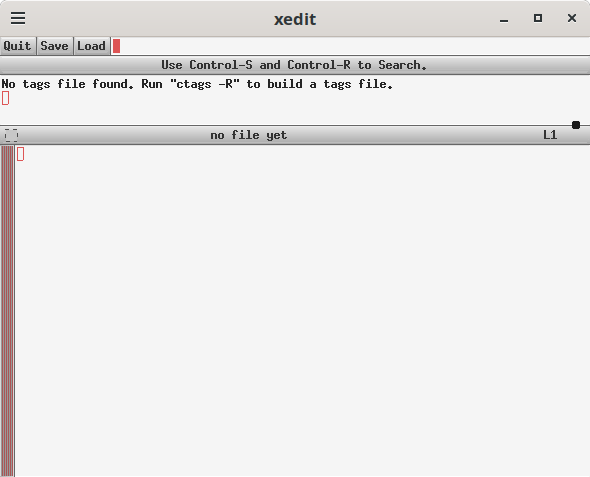Linux 桌面与窗口系统¶
主要作者
本文编写中
相比于久负盛名的 Windows 与 macOS,Linux 的桌面以及其生态是独特的。本文将简单介绍 Linux 桌面与窗口系统中一些重要的概念。
X¶
客户端、服务端与窗口¶
X 窗口系统起源于 1984 年。在那个时代,桌面环境没有酷炫的效果,相比之下,性能与资源占用重要得多。并且当时个人计算机还是一个新兴的概念,用户更多的时候需要使用终端机连接到服务器上运行任务。因此,X 的设计上包含了当时那个年代设计的局限性,并且有着独特的「网络透明性」的设计:需要显示窗口的程序(客户端)和可以给用户显示窗口的程序(服务端)是可以分离的,通过网络去连接。对于单机场景,这里的「网络」大部分时候是 UNIX socket,而在诸如 SSH X Forwarding 这种通过网络连接的场合则是 TCP socket。
默认情况下,如果你正在使用 Linux 桌面,那么默认连接到的 socket 则为 /tmp/.X11-unix/X0(对应环境变量 DISPLAY=:0)。
X 的抽象套接字支持
Linux 支持「抽象套接字」(abstract socket),即允许 Unix socket 绑定到一个不在文件系统中的地址(正常的 Unix socket 需要将地址设置为一个文件路径)。在编写代码时,将 bind() 路径(sun_path)的开头设置为 NULL 就表示抽象套接字。可以查看 /proc/net/unix 文件,其中以 @ 开头的条目则是抽象套接字。
可以注意到,默认情况下,X 服务端会同时监听 /tmp/.X11-unix/X0 和 @/tmp/.X11-unix/X0:
$ cat /proc/net/unix | grep X11-unix/X0
000000002c61e829: 00000003 00000000 00000000 0001 03 379918 @/tmp/.X11-unix/X0
(省略)
0000000055982f40: 00000002 00000000 00010000 0001 01 20744 /tmp/.X11-unix/X0
(省略)
X 在 2008 年引入这个特性时的相关说明如下:
Unlike normal unix sockets, the abstract namespace is not bound to the
filesystem. This has some notable advantages; /tmp need not exist, the
socket directory need not have magic permissions, etc. xtrans servers
will listen on both the normal and abstract socket endpoints; clients
will attempt to connect to the abstract socket before connecting to the
corresponding filesystem socket.
所以事实上,上文的描述是有一些偏差的——目前 X 客户端仍然会会优先连接 @/tmp/.X11-unix/X0。
抽象套接字在如今带来了一些安全性的挑战,因为和文件系统上的 /tmp/.X11-unix/X0 可以依靠文件级别的权限控制不同,抽象套接字只能通过网络命名空间实现隔离。但是如果直接关闭 X server 的抽象套接字,攻击者可以创建虚假的名为 @/tmp/.X11-unix/X0 的套接字,欺骗 X 客户端连接。不过连接到 X server 还需要经过一层认证机制(XAuthority),因此如果不去 xhost + 的话,攻击者必须要能够获取 XAuthority 信息,才能够连接到对应的 X server。
启动一个新的 X Server
存在这样一种场景:你需要启动一个独立的 X server 来测试,而不希望对应的程序使用当前的 X server。其中一个便利的工具是 xvfb-run:Xvfb 是一个无头(无显示)的 X server,对自动化测试场景来说很方便。安装 xvfb 包后,即可使用:
这里我们设置 XAUTHORITY 文件为 xvfb-auth,并且 DISPLAY 为 :99。关于 XAUTHORITY,请参考容器部分的介绍。然后可以通过以下命令确认:
如果希望创建一个 X server 并且能够以子窗口的形式显示出来,那么可以考虑使用 Xephyr 或者 Xwayland 来创建。以 Xephyr 为例,以下命令可以创建一个 800x600 的 X server,并且以窗口的形式显示:
其他应用可以直接用 DISPLAY=:123 环境变量连接到这个 server。
可以运行 xlsclients 获取连接到当前 X 服务器的客户端列表:
$ xlsclients
examplehost gsd-xsettings
examplehost steamwebhelper
examplehost code
examplehost mutter-x11-frames
examplehost steam
客户端可以创建一个或多个窗口,可以使用 xwininfo 获取窗口信息:
$ xwininfo -root -tree
xwininfo: Window id: 0x503 (the root window) (has no name)
Root window id: 0x503 (the root window) (has no name)
Parent window id: 0x0 (none)
57 children:
0x1a00004 "desktop.md - Linux201-docs - Visual Studio Code": ("code" "Code") 1920x1200+306+1440 +306+1440
1 child:
0x2200007 (has no name): () 1920x1200+0+0 +306+1440
(以下省略)
反直觉的是,这里「窗口」的概念可能比你想象的要广得多——在传统的 X11 应用程序中,很多小控件(例如按钮、输入框)也都是窗口。可以尝试打开一个比较复杂的传统 X 程序(例如 xedit),然后 xwininfo 看一下:

xedit 的界面
$ xwininfo -name xedit -tree
xwininfo: Window id: 0x4200072 "xedit"
Root window id: 0x9cf (the root window) (has no name)
Parent window id: 0x3800096 (has no name)
1 child:
0x4200073 (has no name): () 590x440+0+0 +959+143
6 children:
0x4200099 (has no name): () 8x8+572+436 +1531+579
0x420007b (has no name): () 8x8+572+84 +1531+227
0x420007c (has no name): () 590x351+0+89 +959+232
4 children:
0x420008a (has no name): () 8x8+586+333 +1545+565
0x420008c (has no name): () 1x1+0+0 +959+232
6 children:
0x4200096 (has no name): () 179x21+0+0 +960+233
2 children:
0x4200098 (has no name): () 85x17+2+2 +963+236
0x4200097 (has no name): () 64x17+87+2 +1048+236
0x4200094 (has no name): () 100x18+0+0 +960+233
1 child:
0x4200095 (has no name): () 14x4+-1+-1 +960+233
0x4200093 (has no name): () 8x8+0+0 +960+233
0x4200092 (has no name): () 64x17+0+0 +960+233
0x420008e (has no name): () 1x1+0+0 +960+233
2 children:
0x4200091 (has no name): () 14x1+-1+-1 +960+233
0x420008f (has no name): () 1x1+15+0 +976+234
1 child:
0x4200090 (has no name): () 1x19+0+0 +976+234
0x420008d (has no name): () 8x8+0+0 +960+233
0x420008b (has no name): () 8x8+0+0 +959+232
0x420007d (has no name): () 590x351+0+0 +959+232
6 children:
0x4200083 (has no name): () 8x8+572+347 +1531+579
0x4200087 (has no name): () 179x21+0+0 +959+232
2 children:
0x4200089 (has no name): () 85x17+2+2 +962+235
0x4200088 (has no name): () 64x17+87+2 +1047+235
0x4200085 (has no name): () 100x18+0+0 +959+232
1 child:
0x4200086 (has no name): () 14x4+-1+-1 +959+232
0x4200084 (has no name): () 8x8+0+0 +959+232
0x4200081 (has no name): () 590x332+0+19 +959+251
1 child:
0x4200082 (has no name): () 14x332+-1+-1 +958+250
0x420007e (has no name): () 590x18+0+0 +959+232
2 children:
0x4200080 (has no name): () 496x15+2+1 +961+233
0x420007f (has no name): () 90x15+498+1 +1457+233
0x420007a (has no name): () 590x50+0+38 +959+181
0x4200079 (has no name): () 590x18+0+19 +959+162
0x4200074 (has no name): () 590x18+0+0 +959+143
4 children:
0x4200078 (has no name): () 479x18+111+0 +1070+143
0x4200077 (has no name): () 36x18+74+0 +1033+143
0x4200076 (has no name): () 36x18+37+0 +996+143
0x4200075 (has no name): () 36x18+0+0 +959+143
这和 Windows 的传统桌面 API 的设计是非常类似的。不过创建大量的小窗口需要消耗不少的系统资源,因此目前常见的现代 UI 框架,不管是在 Linux 还是在 Windows 上,都基本上抛弃了这种「万物皆窗口」的理念。
窗口管理器¶
另一点有趣的是,尽管 X 中存储了各个窗口的状态(以及它们在 Z 轴的栈式关系),但是 X 本身不会去管理这些窗口要怎么被用户移动、缩放、最大最小化等,也不会去尝试装饰窗口,它只会按照自己记录的状态把这些窗口显示出来。对于具体的窗口管理工作,X 就当起了甩手掌柜,把事情都交给了窗口管理器。窗口管理器是一个特殊的 X 客户端,所有我们常用的窗口功能都是由窗口管理器负责的,包括但不限于管理窗口的显示布局、窗口装饰、焦点控制、虚拟桌面等等。X 服务端允许窗口管理器捕获创建窗口的事件,并且允许窗口管理器将对应的窗口 "reparent" 到窗口管理器创建的框架窗口中,以此实现让程序窗口被窗口管理器控制、装饰的效果。
窗口管理器与 X 服务器之间的交互有一些标准规范,例如 ICCCM 与 EWMH,以减小不同的窗口管理器实现之间的混乱与不一致问题。
窗口管理器本身也是一个独立的进程,如果窗口管理器退出,那么其他的 X 客户端不会停止运行,但是你可能无法再控制它们了(例如,可能它们被别的窗口挡住了,而没有窗口管理器的装饰的话,你可能没有办法移动它们)。这种分离的设计也帮助孕育了很多独特的窗口管理器设计,例如平铺式窗口管理器(例如 i3wm),相比于传统的浮动式窗口管理器,可以自动以不重叠的方式显示当前的所有窗口,用户不需要再用鼠标手动调整每个窗口的大小等等。
X 协议¶
(TODO)